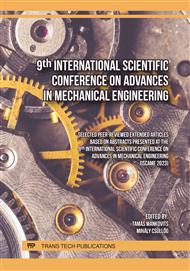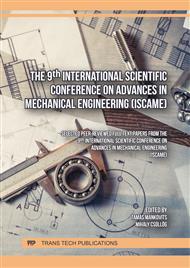p.3
p.11
p.23
p.31
p.39
p.47
p.55
p.65
Optimizing the Clamping Components of a Vibrating System on a Plow
Abstract:
In this work, a method for optimizing the main clamping components for a vibration system on the working body of a plow is presented in order to reduce the forward forces. To achieve this goal, a variable geometric model is established, which considers the unique operational parameters, and a three-dimensional finite element model is generated for conducting an optimization investigation. The 3D finite element analysis is automatically refreshed for each version of the geometric model. An optimization analysis is characterized by its defined goals or objective functions, alongside design variables and constraints. To illustrate, one can adjust the dimensions of a component to minimize material usage, all the while ensuring that stresses remain below a predefined threshold. In this scenario, the volume being minimized serves as the objective function, the dimensions under adjustment represent the design variables, and the stress limitation acts as the behavior constraint. The main objective is to optimize fasteners using finite element analysis to reduce production cost with maximum efficiency.
Info:
Periodical:
Pages:
23-30
Citation:
Online since:
July 2024
Authors:
Keywords:
Price:
Сopyright:
© 2024 Trans Tech Publications Ltd. All Rights Reserved
Share:
Citation:



